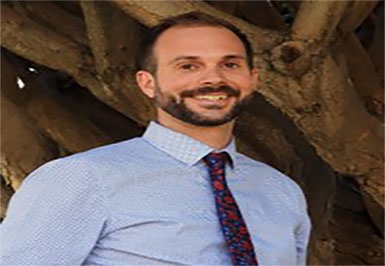Coronavirus and Climate Change
 James Evans
James EvansMy friends and colleagues alike know I spend most of my free time in the mountains rock climbing. This past weekend, in the time it took to climb Fairview Dome via the "Lucky Streaks" route in Tuolumne, the skies turned from bluebird to apocalyptic as the wind blew in dark smoke from several wildfires. My holiday weekend plans, like those of many others, were abruptly cut short as the smoke engulfed the Sierras from Sequoia to Mono Lake and beyond.
California just set an alarming new record for acres burned at over 2 million and counting. Los Angeles County recorded its highest temperature ever over the weekend: 121 degrees. Many of our state’s national forests are temporarily closed, and one of my colleagues’ home has been reduced to ash. Other states are experiencing extreme weather as well. In 48 hours, Colorado set records for both heat and snow, and as we enter the heavy part of hurricane season, 16 named storms have already ravaged the Gulf and Atlantic coasts. NOAA predicts 25 named storms, an amount they've never forecast before.
It's never been clearer that climate change is happening right now. Not in 2030, or 2050, or 2100. Now. Although it is expected we will see a welcomed temporary decrease in carbon emissions in 2020 due to the global pandemic, a new study has shown that both Arctic and Antarctic sea ice melting rates now match the IPCC’s worst-case scenario for global warming. The new-normal is hot, but in the coming years and decades we are on track to look back at these fire season months as being some of the coolest in our memories. That never ceases to amaze and alarm me. I wonder, will a mask become a permanent part of my rock climbing attire just as it has become one we check for every time we leave the house like our keys, phones, and wallets? We are rapidly approaching our carbon budget to remain below 1.5°C on a timeline of less than a decade, meaning emissions reductions must become permanent and then continue declining now, not in 10 years. A return to business-as-usual once our economy recovers appears to now mean returning to our worst-case scenario, which comes with consequences that will need to be re-evaluated as well.
Just as the climate crisis exacerbates all of the social, economic, and racial inequalities currently being discussed in the national conversation on environmental justice, coronavirus also accentuates the poor health and economic conditions of underserved populations. We know that poor air quality from fossil fuels and ash can lead to pulmonary and cardiovascular morbidities, which also increases the likelihood that these patient populations could suffer severe symptoms if they contract the virus. We know that minority populations are affected disproportionately by coronavirus and climate change alike. And we also know a hotter world increases the likelihood we will see more, yes more, pandemics similar to, or potentially even worse than the one we’re currently fighting. The two are inextricably linked.
Healthcare professionals are consistently ranked as being the most respected by the public, and just as they have more than stepped up to meet their responsibility to society during the ongoing pandemic, they must also step up to be advocates for our patients and communities as leaders and experts on the connection between environmental health and human health. I cannot think of better example of this connection than when our masks are filtering out both ash and pathogens at the same time. We must act on the climate emergency with the same urgency that we have during this crisis, and demand our elected officials do the same, because unfortunately the human cost of not doing so will be far greater than what we're currently experiencing.




